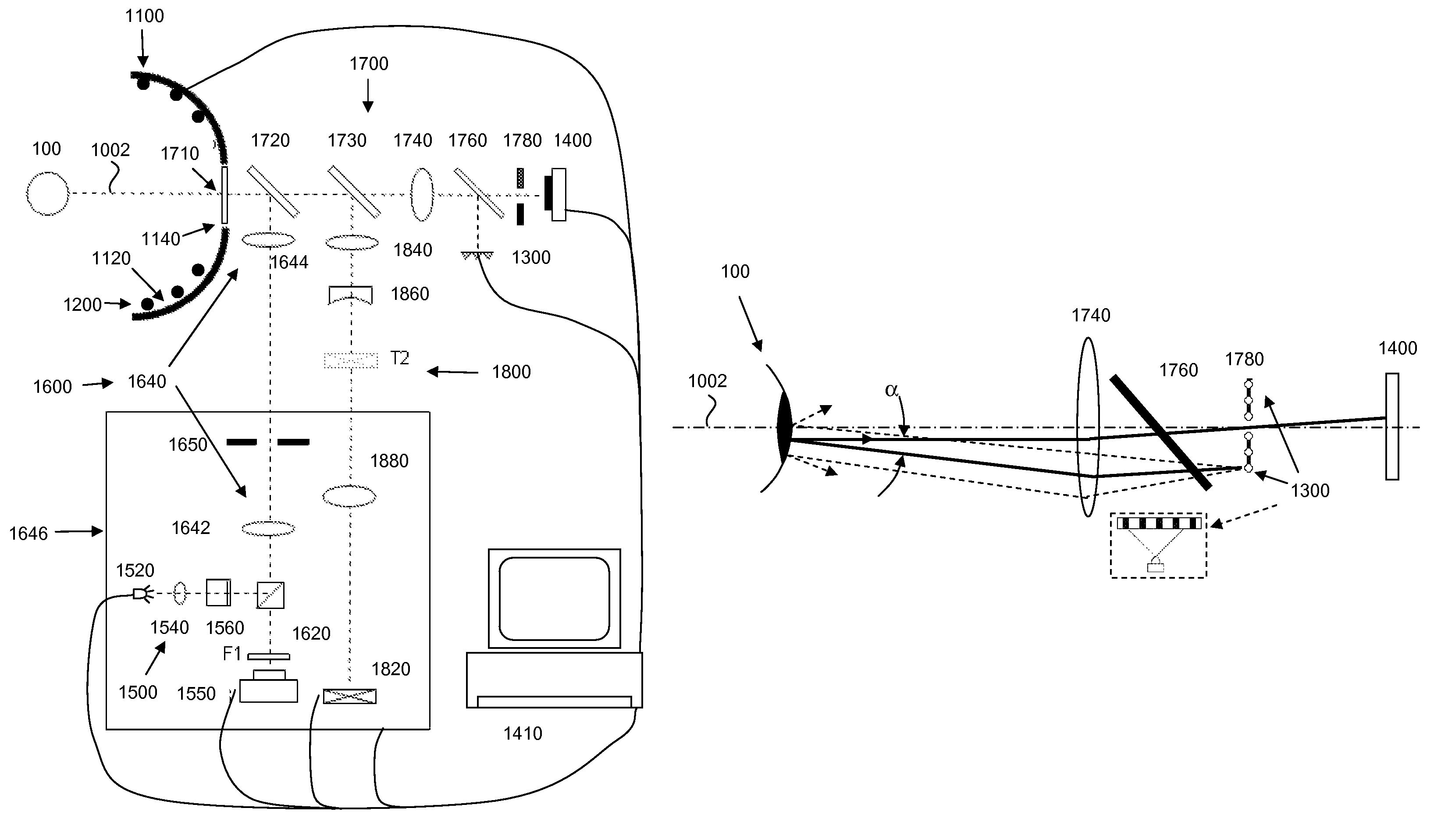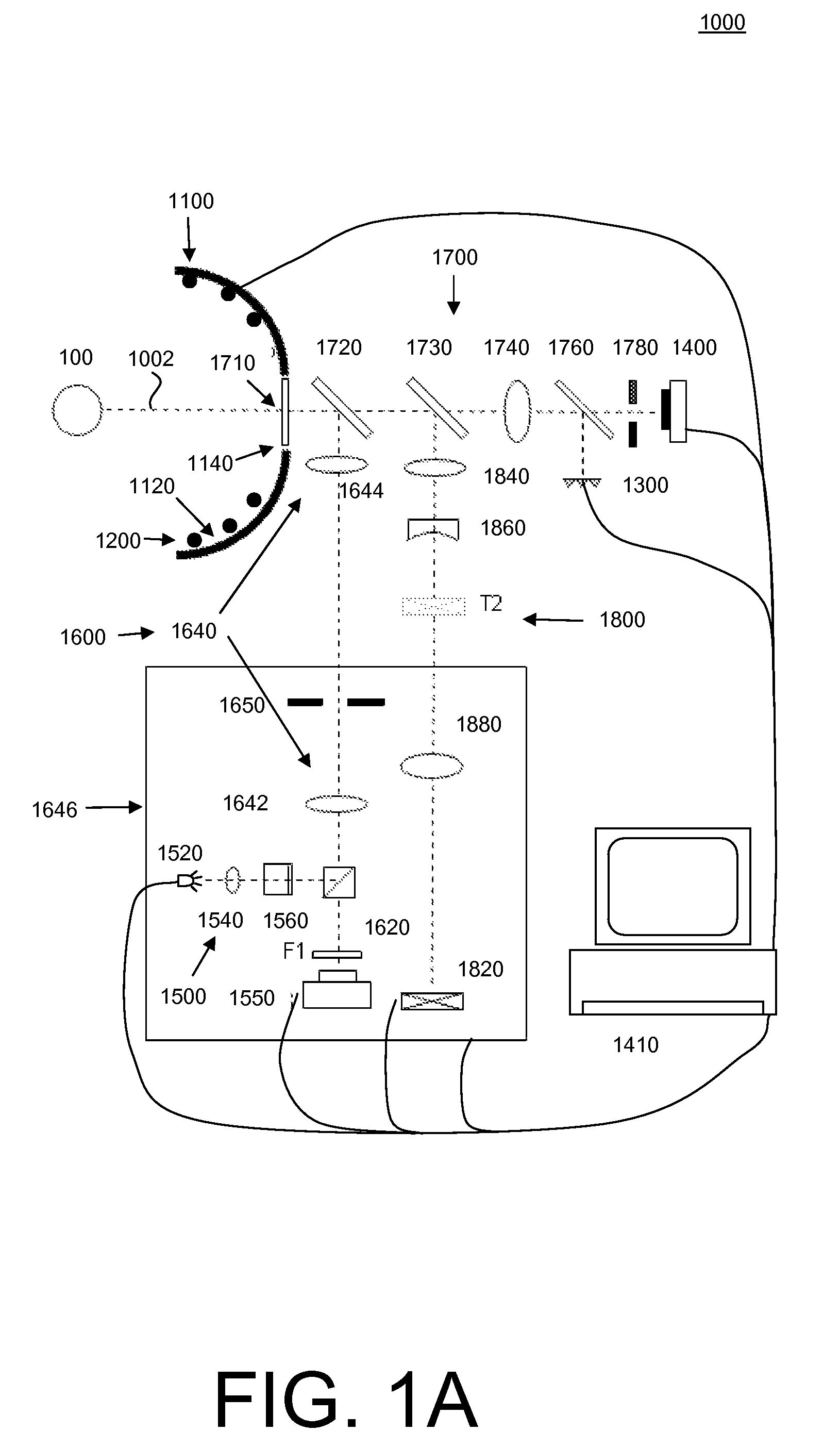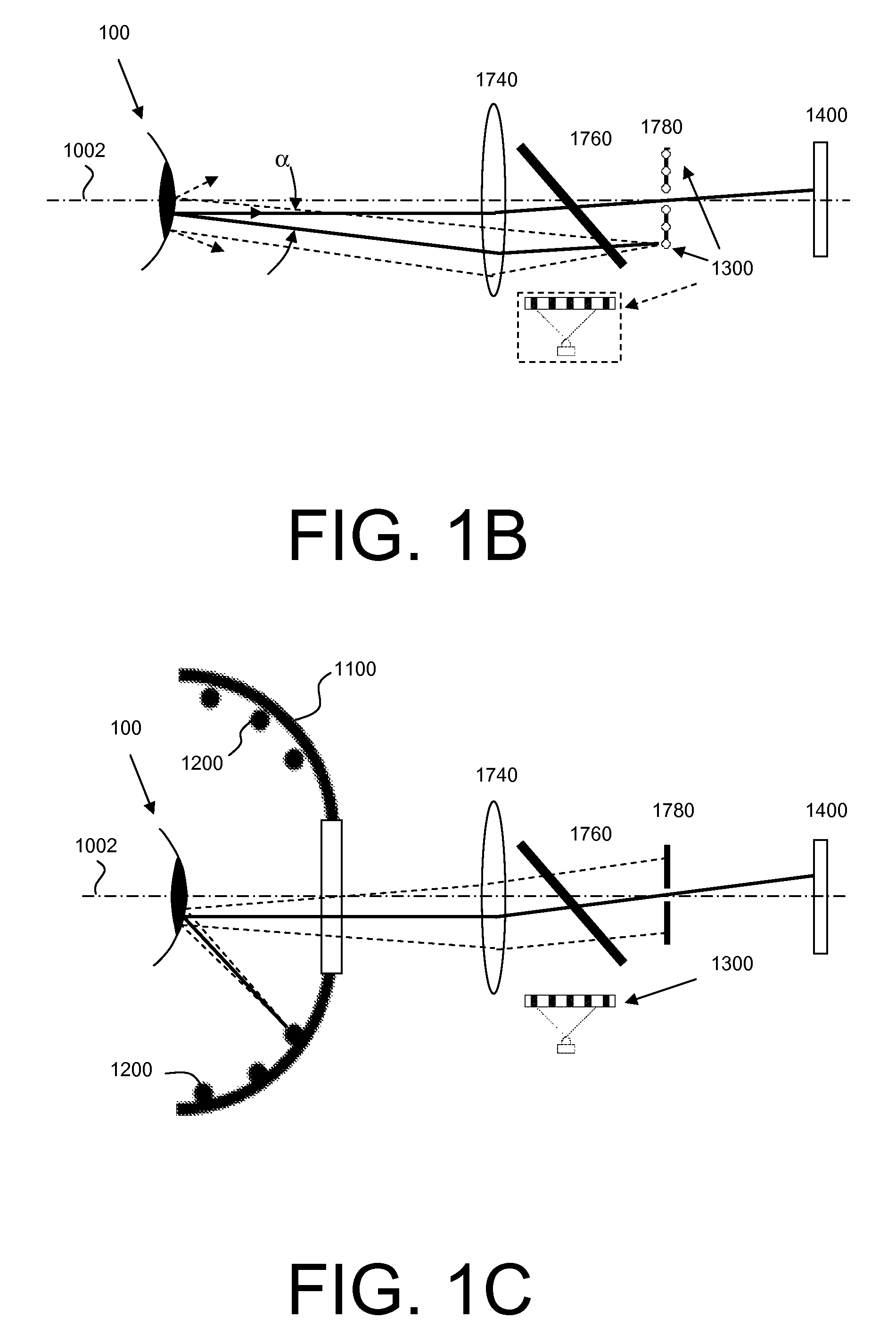System and method for measuring corneal topography
a topography and eye topography technology, applied in the field of vision diagnostics, can solve problems such as exacerbated problems, bad eyesight, and the inability to detect the central region of the corneal surface during the measuremen
- Summary
- Abstract
- Description
- Claims
- Application Information
AI Technical Summary
Benefits of technology
Problems solved by technology
Method used
Image
Examples
Embodiment Construction
[0034]As discussed above, it would be desirable to provide a combined system for measuring aberrations and a corneal topography of an eye.
[0035]FIG. 1A shows one embodiment of a system 1000 for measuring aberrations and corneal topography of an eye 100. System 1000 comprises a structure 1100 having a principal surface 1120 with an opening or aperture 1140 therein; a plurality of first (or peripheral) light sources 1200 provided on the principal surface 1120 of the structure 1100; a plurality of second, or central, light sources 1300 (also sometimes referred to as “Helmholtz light sources”); a detector array 1400; a processor 1410; a third light source 1500 providing a probe beam; a wavefront sensor 1550; and an optical system 1700 disposed along a central axis 1002 passing through the opening or aperture 1140 of the structure 1100. Optical system 1700 comprises a quarterwave plate 1710, a first beamsplitter 1720, a second beamsplitter 1730, an optical element (e.g., a lens) 1740, a ...
PUM
 Login to View More
Login to View More Abstract
Description
Claims
Application Information
 Login to View More
Login to View More - R&D
- Intellectual Property
- Life Sciences
- Materials
- Tech Scout
- Unparalleled Data Quality
- Higher Quality Content
- 60% Fewer Hallucinations
Browse by: Latest US Patents, China's latest patents, Technical Efficacy Thesaurus, Application Domain, Technology Topic, Popular Technical Reports.
© 2025 PatSnap. All rights reserved.Legal|Privacy policy|Modern Slavery Act Transparency Statement|Sitemap|About US| Contact US: help@patsnap.com



